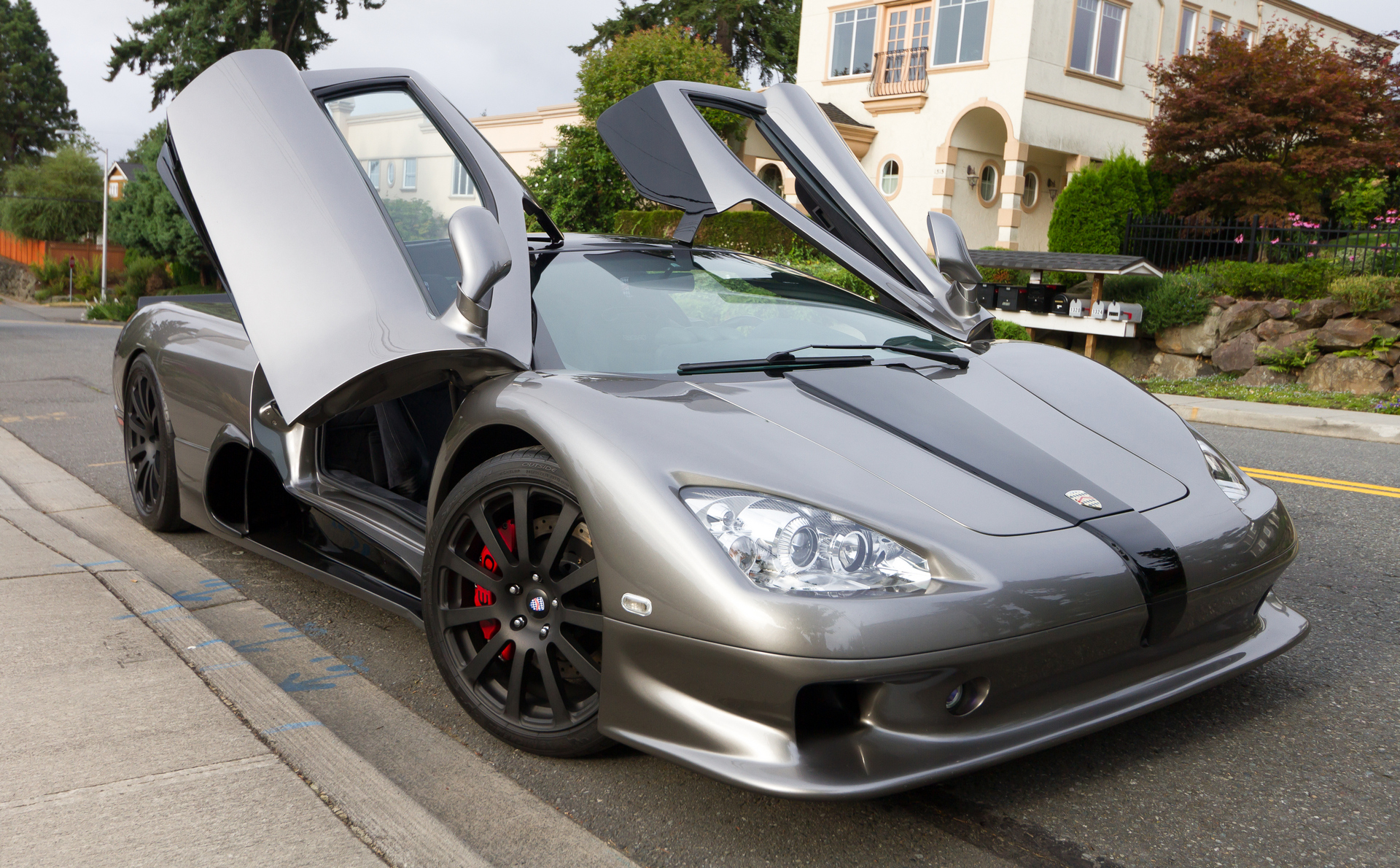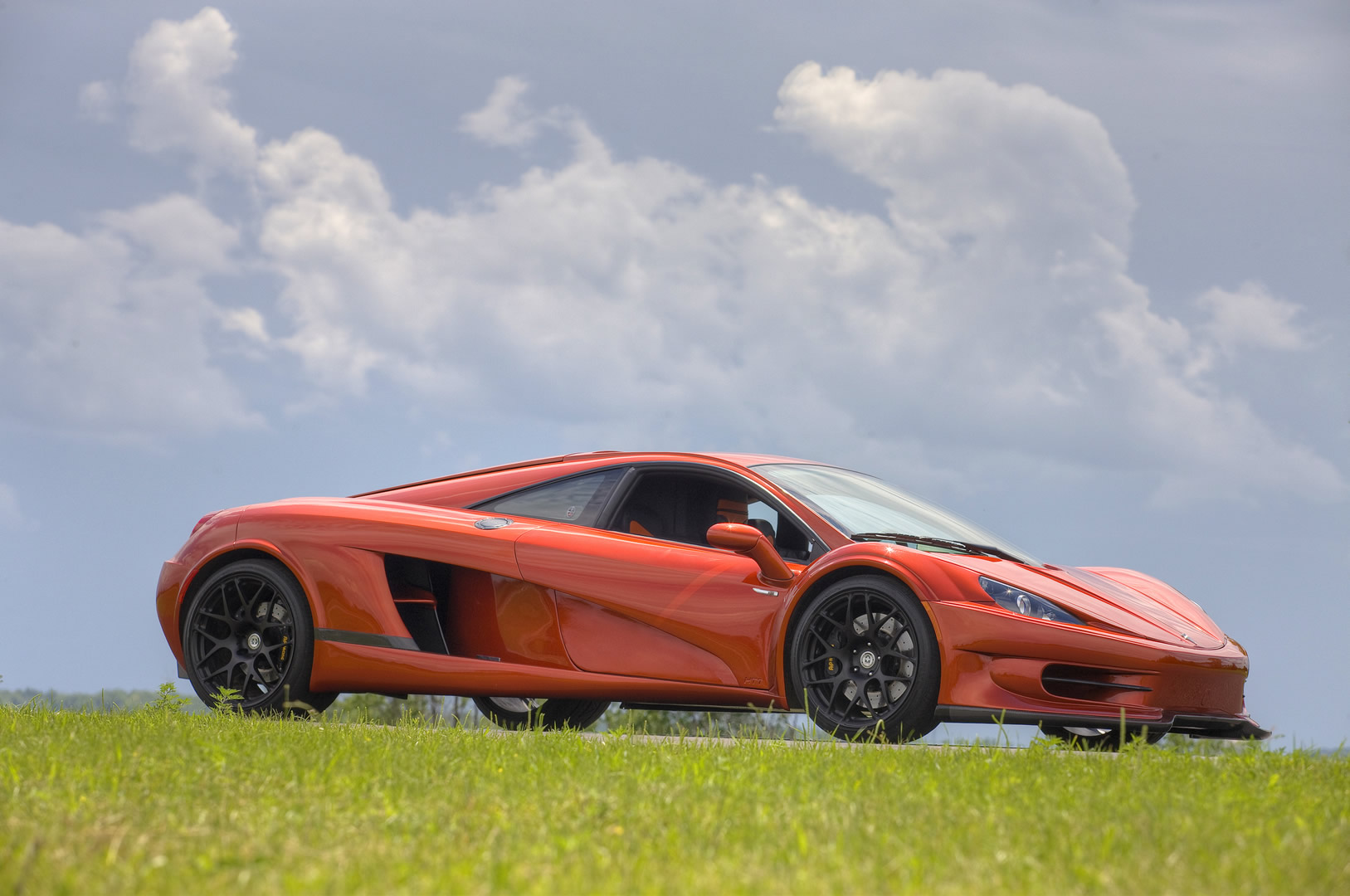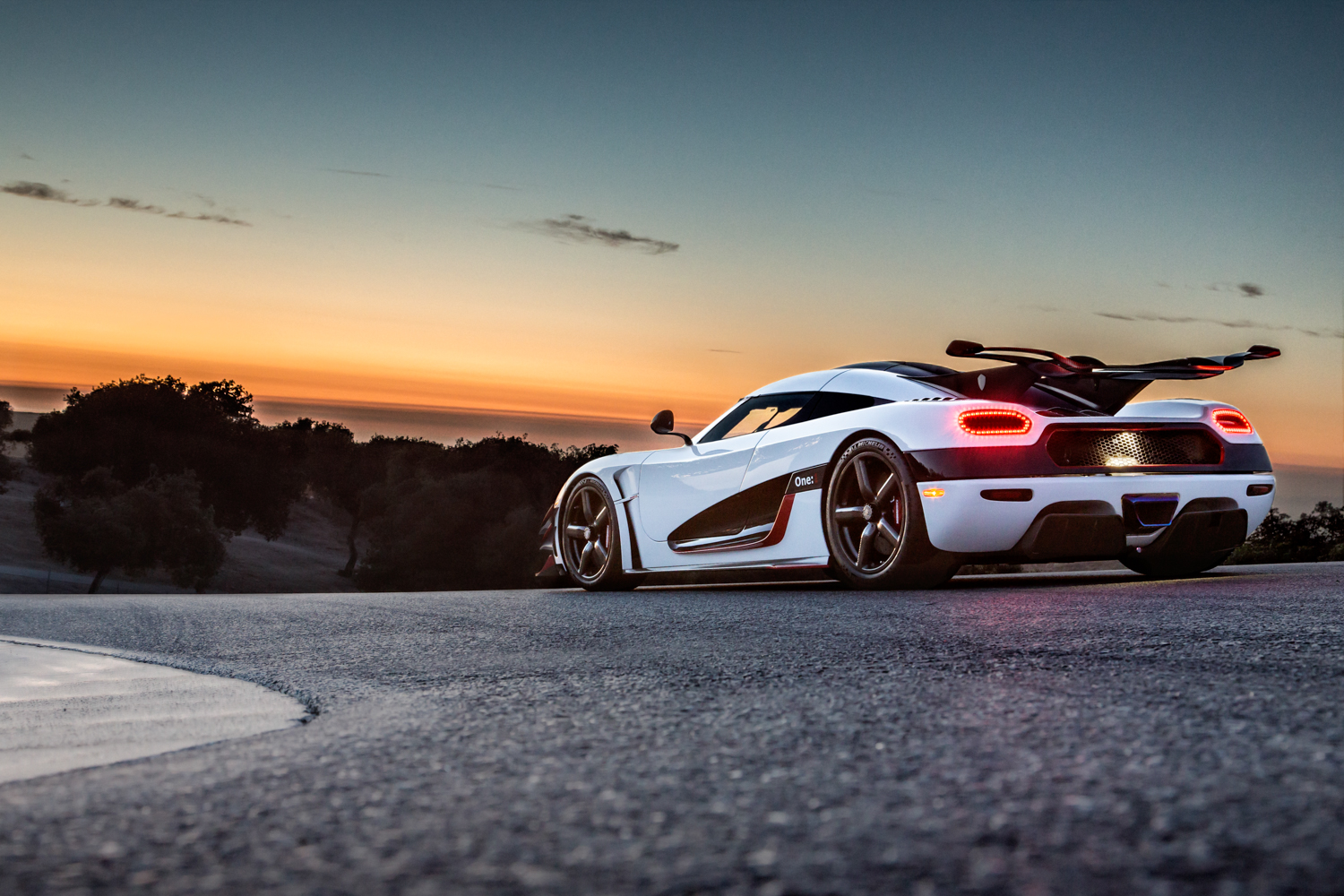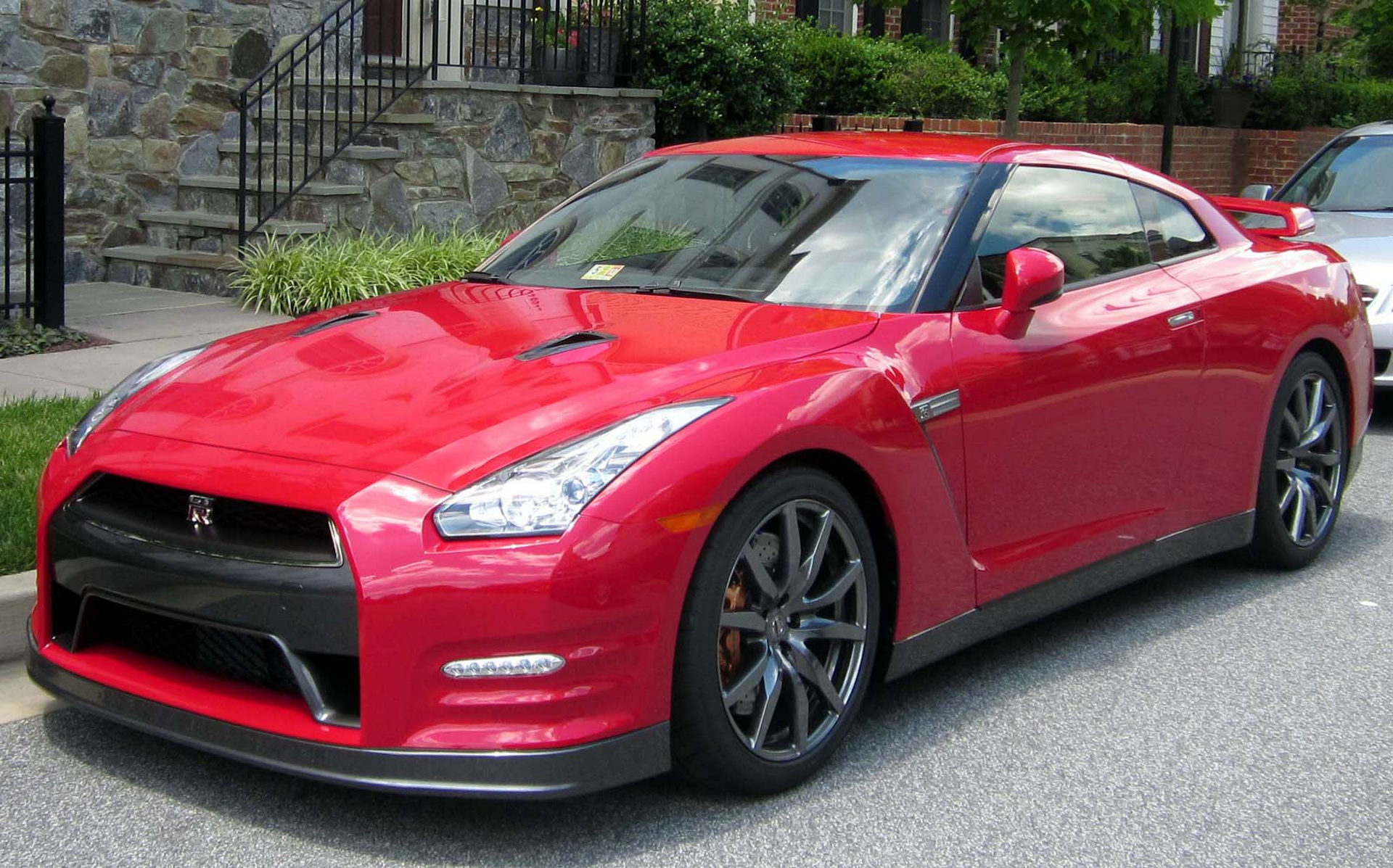What are the most powerful cars in the world? Here is Carrrs.com rating of vehicles with the most powerful engine.
10. 2009 SSC Ultimate Aero TT
Power — 1287 bhp/946 kW
The SSC Ultimate Aero is a mid-engined sports car that was produced by SSC North America (formerly known as Shelby SuperCars) from 2006 until 2013. The SSC Ultimate Aero held the title of the fastest production car in the world, according to the Guinness World Records, from 2007 (when it was officially timed at 256.14 mph (412.22 km/h)) until the introduction of the Bugatti Veyron Super Sport in 2010. However, in April 2013, the Guinness World Records disqualified the Veyron’s record time, and reinstated the Ultimate Aero as the fastest production car ever; this change was reverted just five days later.
The SSC Ultimate Aero was not sold with electronic driver aids such as antilock brakes or traction control, as according to Jerod Shelby, “Early design philosophy on the car was to make it a driver’s car. I wanted a car that you not only throttled with your right foot but at times you could steer with your right foot and a sensor ”
9. 2008 HTT Locus Plethore LC-1300
Power — 1300 bhp/956 kW
The HTT Pléthore is the first Canadian supercar, developed and produced by HTT Automobile in Quebec, Canada. It debuted at the 2007 Montreal International Auto Show as a pre-production prototype under the name “Locus Pléthore”, under the supervision of Luc Chartrand. It has a supercharged 6.2L V8 with 750 hp (560 kW) and 655 lb·ft (888 N·m) of torque or an optional high performance home made engine with 1,100 hp (820 kW). This engine is supported by Pratt & Miller and based supercharged V8 from the Corvette ZR1. The chassis and body are made entirely out of carbon fibre with no engine subframe, resulting in the chassis being exceptionally rigid.The car will weigh approximately 1,089 kg (2,401 lb) and, if mated to the 1,300 hp (970 kW) engine, will have a power-to-weight ratio equivalent to that of a Formula One race car. Two prototypes were constructed, the second suggests a centre seating position previously featured in the McLaren F1, 1966 Ferrari 365 P prototype, and the 1969 Bizzarrini Manta Concept. HTT Automobile will custom build a limited lifetime production run of 99 Pléthores.
On February 16, 2011, the Pléthore was featured on CBC’s The Dragon’s Den. Sébastien Forest & Carl Descoteaux put forward their pitch for Canada’s first supercar, asking $1.5 million dollars for 20% of their company. Subject to completion of due diligence, W. Brett Wilson and Robert Herjavec offered to become partners in the company by purchasing 20% of the company for $1 million, providing an additional $500,000 in loans, and acquiring the rights to purchase 3 Plethores at cost, including the first car to be sold in Canada.This deal fell through after the transmission failed during a test drive, however an unidentified party stepped in after their television appearance with the necessary funding. HTT plans to make 6-7 cars a year with 6 cars registered as pre-sold.
8. 2011 SSC Tuatara
Power — 1350 bhp/993 kW
The SSC Tuatara is an American sports car to be produced by SSC North America. According to the manufacturer, the Tuatara will use an SSC designed billet aluminum twin-charged 6.9-Litre V8 engine block that will redline at 9,200 rpm and deliver a minimum of 1,350 bhp (993 kW) and 1,280 lb·ft (1,735 N·m) at 6,800 rpm on 91 RON rated unleaded premium petrol.
Its engine will be capable of higher outputs of 1,700 hp (1,268 kW). The car will weigh 2,750 pounds (1,250 kg) due to a carbon fiber construction (including the wheels) and aluminium crumple zones. This means it will manage a power-to-weight ratio of over 1,000 hp (746 kW) per tonne. The manufacturer claims the Tuatara will accelerate from a stop to 62 mph (100 km/h) in 2.3 seconds and the top speed is estimated to be 276 miles per hour (444 km/h).
7. 2014 Koenigsegg One:1
Power — 1360 bhp/1000 kW
The One:1 was introduced in 2014. Seven examples, including one prototype, were built during 2014 and 2015. This was one of the most exclusive production car programs ever envisaged in the car industry.
The hp-to-kg curb weight ratio is an astonishing 1:1. This is the “dream” equation, previously thought impossible when it comes to fully road legal and usable sports cars. The One:1 is the first homologated production car in the world with one Megawatt of power, thereby making it the world´s first series produced Megacar.
The One:1 truly raised the performance bar. The One:1 featured new, unique solutions that enhance track performance without compromising top speed or everyday usability, with a stunning visual appearance to go with it.
Examples of features: unique track-optimized aero winglets, extended venturi tunnels and side splitters, Le-Mans inspired active wing configuration and optimized active under trim air management. Large air vents for improved cooling, roof air scoop to support the 1 Megawatt of power, 8250 RPM rev limit, complemented with custom-made Michelin Cup Tires, upgraded rear Triplex suspension with carbon bevel springs and active shock absorbers and ride height, combined with upgraded revolutionary Koenigsegg Aircore carbon fiber wheels.
Koenigsegg was the first extreme car manufacturer to take steps toward green technology with the release of the biofuel CCXR in 2007. The One:1, a sibling of the highly competitive Agera R, follows in the footsteps of the CCXR as it also runs on E85 biofuel, race fuel or normal gasoline.
6. 2013 9ff F97 A-Max
Power — 1400 bhp/1029 kW
9ff is a German car tuning company, based in Dortmund, founded by Jan Fatthauer in 2001, specializing in converting stock Porsches into street legal racing machines, either as fully tuned cars, or selling individual parts or kits. They are best known for building one of the first cars to exceed 400 km/h (249 mph) – the GT9, which is capable of speeds up to 256 mph (412 km/h). The former company, 9ff Fahrzeugtechnik GmbH, filed for bankruptcy in September 2013.The 9ff Engineering GmbH, founded in October 2013, continues proceedings. F 97 A-Max is the most powerful vehicle from 9ff at the moment.
5. 2013 Nissan GT-R Switzer R1K-X Red Katana
Power — 1400 bhp/1029 kW
In 2013, during a training day of a Russian drag racing event, Unlim 500, a 1700 hp MK.1 GTR tuned by Switzer(called Goliath R1K-X) made a new record of top speed and standing mile trap speed, reaching the finish line at 402,23 km/h(249.9mp/h), breaking the previous record of 386 km/h made by an AMS/Turbo Drive 1550 hp Alpha 12+ GTR, which still holds the standing mile world record of 22,086s @ 385,43 km/h.
With more than 1300 whp on tap on race fuel, the Switzer Performance R1K-X GTR is one of the most extreme high-performance cars in the world. With consistent 8-second quarter-mile performance and a top speed well in excess of 250 mph, Switzer R1K-X GTRs are ready to take on the wildest events in the automotive universe, from half-mile drags to standing mile blasts to airstrip attacks, the R1K-X is ready to deliver.
Now, the Switzer Performance R1K-X GTR is available with an ethanol option as well- delivering the same extreme levels of performance with cleaner emissions on inexpensive E85. A great option for those with access to ethanol blended fuels!”
4. 2011 Nissan GT-R AMS Alpha 12
Power — 1500 bhp/1103 kW
Acceleration better than most dedicated drag cars with enough top end speed to put any exotic to shame, yet mild mannered enough for daily use. At over 1500 HP the AMS Alpha 12 was developed to transform your GT-R into one of the fastest, street legal cars to ever hit the highway. In initial testing we set a new record for 60-130 mph acceleration at a blistering 3.31 seconds! You would be hard pressed to find ANY vehicle in the world on the road or the track that can come close to your Alpha 12 GT-R! Not even the $1.5M Bugatti Veyron can compare!
The key to the menacing power of the Alpha 12 is the AMS Turbo System capable of generating over 1500 HP yet providing an enormous and usable powerband. In addition a comprehensive list of supporting Alpha Series components integrate to form a turn-key solution for unmatched power and performance.
Since 2010, the Alpha brand has held the record for the World’s Fastest GT-R. In 2010 it was 205mph in an Alpha 9. In 2011 an Alpha 12 reset the record at 216mph. In 2012 it was 232mph. The latest record was set by an Alpha 12 in 2013 came in at an astounding 237.5mph!
3. 2014 Lamborghini Aventador Mansory Competition
Power — 1600 bhp/1176 kW
The particular body package makes clear MANSORY wants to differentiate itself significantly from the vehicle series. Besides design elements such as the ultralight front bumper with the exposed carbonfibre sections or the mirror housings in typical Aventador edge design, a number of targeted measures deliver a boost in aerodynamics.
Be it the side skirts, the rear bumper or the high performance wing, all components are made of carbonfibre and hardened in the autoclave under high pressure and temperature. This high-tech process brings some impressive benefits: Both the acceleration values and the braking distance and fuel consumption is improved by the reduction of the vehicle’s weight. Furthermore, the newly designed side skirts steadies the airflow between the two axles. The new wing profile, in combination with the diffuser, delivers greater contact pressure on the rear axle.
2. 2014 Lamborghini Aventador LP1600-4 Mansory Carbonado GT
Power — 1600 bhp/1176 kW
Carbonfibre everywhere the eye can see: The ultralight and high-strength material of carbonfibre finds ample uses even in the series version of the Lamborghini Aventador LP700-4. MANSORY purposefully continued to use it in the completely reworked MANSORY CARBONADO GT as the main component of all its bodywork components. Every single element of the MANSORY aerodynamic design is made in prepreg autoclave process in perfect surface quality and precision-built into the vehicle. A carbonfibre weave with a stealth-look is being used, which is being exclusively deployed by MANSORY in vehicle construction.
An eye-catching new feature of the newly styled Aventador front is the striking skirt with the optimised air intakes for improved ventilation of the front radiator. In combination with the new front lip spoiler and the proprietary developed daytime running lights MANSORY has not only achieved an aggressive appearance but also generated additional drive. Also the front wing, as well as the bonnet will be exchanged and replaced by proprietary developments. The sides have grown by 40 millimetres on the front and by a remarkable 50 millimetres on the rear axle in width.
Newly designed side skirts are also fitted. These steady the air flow between the axles and feed additional cooling air into the drive unit and the rear braking system through integrated routing channels. The diffuser built into the new rear spoiler stabilises the rear at high speeds and creates surface contact pressure together with the enlarged rear wing on the rear axle. The body styling kit is completed by the replacement of the roof and engine compartment cover by all-carbon elements.
1. 2016 Koenigsegg Regera
Power — 1790 bhp/1316 kW
The Regera was created as a luxury Megacar alternative to Koenigsegg’s traditional extreme, light weight, race-like road cars. Even though the One:1 and the Agera RS have surprising levels of practicality, creature comforts and features, their primary focus is, and has always been, to be the overall fastest cars on the planet – around a racetrack or anywhere else.
Regera is Swedish for “to Reign” – a suitable name for a machine that offers a never seen before combination of power, responsiveness and luxury – a true Dr. Jekyll & Mr. Hyde persona. In spite of all its advanced technology and creature comforts, the Regera is comparatively light. Therefore, it can still perform competitively around a race circuit. The only Hyper/Megacar that we think could possibly be faster around a circuit is another Koenigsegg.
The Regera will reign as the king of the open road – as the fastest accelerating, most powerful production car ever. The Regera will be handcrafted in only 80 examples. Apart from being a suitable production run for Koenigsegg´s newly upgraded and refurbished production facility, the number 80 also symbolizes the principle of domination, control and achievement in Pythagorean Numerology.
















































